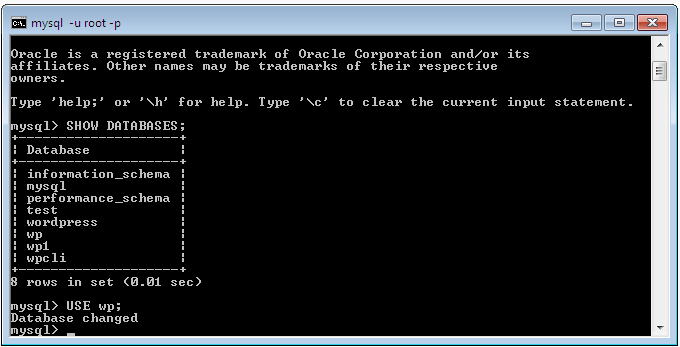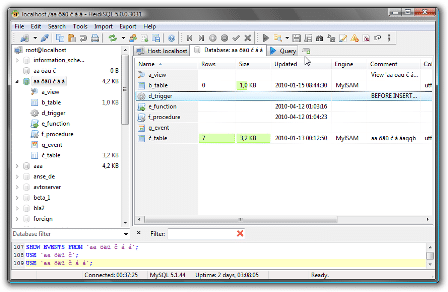
- #Mysql show databases cli how to
- #Mysql show databases cli install
- #Mysql show databases cli update
- #Mysql show databases cli upgrade
- #Mysql show databases cli password
| Create_tmp_table_priv | enum('N','Y') | NO | | N | | | References_priv | enum('N','Y') | NO | | N | | | Field | Type | Null | Key | Default | Extra | On my current server this shows the following 37 columns of MySQL user information, as shown here: You can get a listing of the fields in the er table by running this MySQL query:
#Mysql show databases cli how to
How to reduce the amount of ‘user’ information shown The next section provides more details and information about this second query.
#Mysql show databases cli password
Mysql> select host, user, password from er This makes for a lot of output, so as a practical matter you may want to trim down some of the fields to display, something like this: However, note that this query shows all of the columns from the er table. To show the users in a MySQL database, first log into your MySQL server as an administrative user using the mysql command line client, then run this MySQL query: This command does not delete your server.MySQL FAQ: How do I show/list MySQL users, i.e., the user accounts in a MySQL or MariaDB database? Solution You can use any of these commands to create, delete, list and view database properties of a database on your server CmdletĪz mysql db create -g myresourcegroup -s mydemoserver -n mydatabasenameĪz mysql db delete -g myresourcegroup -s mydemoserver -n mydatabasenameĭelete your database from your server. You can manually scale up with either using a bash script or using MySQL Workbench
#Mysql show databases cli update
You can see all the server operation you can perform az mysql server overview az mysql server update -resource-group myresourcegroup -name mydemoserver -sku-name GP_Gen5_4 -storage-size 6144
You can scale up your pricing tier, compute and storage easily using the following command.


If you have not already created a server, refer to this quickstart to create one. To get all your subscription, use az account list. If you have multiple subscriptions, choose the appropriate subscription in which the resource should be billed. Make a note of the id value from the az login output to use as the value for subscription argument in the command. Select the specific subscription under your account using az account set command. Note the id property, which refers to Subscription ID for your Azure account. You'll need to log in to your account using the az login command.
#Mysql show databases cli install
If you need to install or upgrade, see Install Azure CLI. To see the version installed, run the az -version command. This article requires that you're running the Azure CLI version 2.0 or later locally. If you don't have an Azure subscription, create a free account before you begin. Management tasks include compute and storage scaling, admin password reset, and viewing server details. This article shows you how to manage your Single servers deployed in Azure. For more information about migrating to Azure Database for MySQL - Flexible Server, see What's happening to Azure Database for MySQL Single Server?

#Mysql show databases cli upgrade
We strongly recommend for you to upgrade to Azure Database for MySQL - Flexible Server. Azure Database for MySQL - Single Server is on the retirement path.


 0 kommentar(er)
0 kommentar(er)
